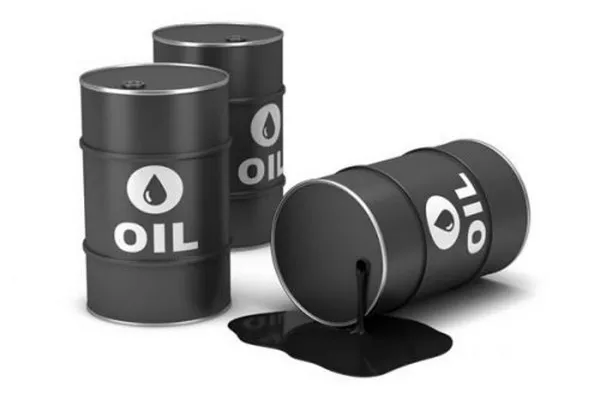Crude oil futures prices play a pivotal role in the global economy, serving as a barometer for energy markets and influencing various sectors from transportation to manufacturing. In this article, we delve into the intricacies of crude oil futures prices, exploring their definition, price determination factors, market significance, trading mechanics, risk management strategies, interpretation of price movements, historical trends, and future outlook.
Definition of Crude Oil Futures
Futures contracts are financial agreements that obligate the buyer to purchase and the seller to deliver a specified quantity of a commodity at a predetermined price on a future date. Crude oil futures are contracts that enable participants to speculate on or hedge against the future price of crude oil. These contracts are standardized and traded on commodities exchanges such as the New York Mercantile Exchange (NYMEX) and the Intercontinental Exchange (ICE).
Price Determination
Several factors influence the pricing of crude oil futures:
Market Demand: Changes in global economic conditions, such as growth rates and industrial activity, affect the demand for crude oil. Strong demand typically leads to higher prices, while weak demand can result in price declines.
Geopolitical Events: Political tensions, conflicts, and supply disruptions in major oil-producing regions can significantly impact crude oil prices. For example, conflicts in the Middle East or disruptions to shipping lanes can disrupt supply, leading to price spikes.
Production Costs: The cost of extracting, refining, and transporting crude oil also influences its price. Factors such as technological advancements, labor costs, and regulatory requirements can affect production costs and, consequently, futures prices.
Market Significance
The prices of crude oil futures hold immense significance in the global economy:
Energy Sector: Crude oil is a primary source of energy for transportation, manufacturing, and electricity generation. Changes in oil prices directly impact the profitability and operational costs of energy companies.
Inflation and Consumer Spending: Fluctuations in oil prices can affect inflation rates and consumer spending patterns. Higher oil prices often lead to increased production costs for businesses and higher prices for consumers, potentially dampening economic growth.
Currency Markets: Oil prices can influence currency exchange rates, particularly for countries heavily reliant on oil exports. A decline in oil prices may weaken the currencies of oil-exporting nations, while a rise in prices can strengthen them.
Trading Mechanics
Trading crude oil futures involves several key elements:
Exchanges: Crude oil futures are traded on established exchanges like NYMEX and ICE, providing liquidity and price transparency to market participants.
Contract Specifications: Each futures contract specifies the quantity, quality, and delivery location of the crude oil, as well as the expiration date and contract size.
Buying and Selling: Traders can buy (long) or sell (short) crude oil futures contracts depending on their market outlook. Profits or losses are realized based on the difference between the contract price and the market price at the time of settlement.
Leverage: Futures trading involves the use of leverage, allowing traders to control a large position with a relatively small amount of capital. While leverage magnifies potential returns, it also amplifies risk.
Risk Management
Investors utilize crude oil futures for both hedging and speculative purposes:
Hedging: Producers, consumers, and investors can use crude oil futures to hedge against adverse price movements. For example, an airline may use futures contracts to lock in fuel prices, mitigating the risk of price fluctuations.
Speculation: Traders speculate on crude oil futures prices based on their analysis of supply and demand fundamentals, geopolitical events, technical indicators, and market sentiment. Speculative trading can offer opportunities for profit but also carries inherent risks.
Interpreting Price Movements
Interpreting crude oil futures price movements requires an understanding of technical and fundamental analysis:
Technical Analysis: Traders analyze price charts, volume, and technical indicators such as moving averages and trendlines to identify patterns and predict future price movements.
Fundamental Analysis: Factors such as inventory levels, production forecasts, geopolitical developments, and economic data influence crude oil prices. Traders incorporate these fundamental factors into their analysis to assess supply and demand dynamics.
Historical Trends
Historical price trends in crude oil futures have been shaped by various factors:
Supply Disruptions: Wars, conflicts, natural disasters, and geopolitical tensions have historically disrupted crude oil supply, leading to price spikes.
Economic Cycles: Economic booms and recessions influence oil demand, impacting prices accordingly. During periods of economic expansion, demand for oil typically increases, while recessions can lead to demand contractions and price declines.
Future Outlook
The future outlook for crude oil futures prices is subject to numerous factors:
Supply and Demand Dynamics: Ongoing shifts in global energy consumption patterns, technological advancements in renewable energy, and geopolitical developments will continue to influence supply and demand for crude oil.
Environmental Concerns: Growing awareness of climate change and efforts to reduce carbon emissions may impact the long-term demand for fossil fuels, including crude oil.
Geopolitical Risks: Political instability in major oil-producing regions, trade tensions, and conflicts could lead to supply disruptions and price volatility.
In conclusion, crude oil futures prices serve as vital indicators of global economic health and play a central role in energy markets.
Understanding the factors that influence these prices, along with effective risk management strategies, is essential for investors and industry participants seeking to navigate the complexities of the crude oil market.


